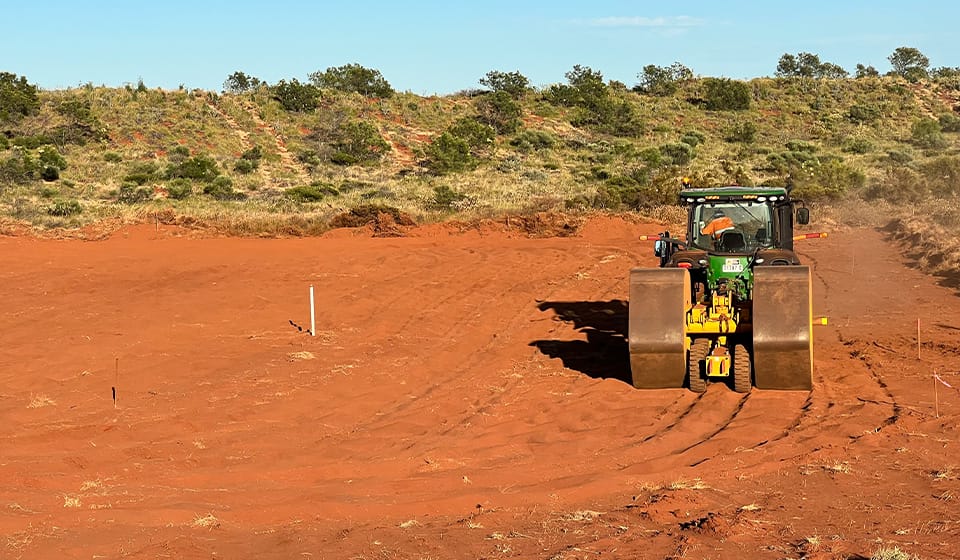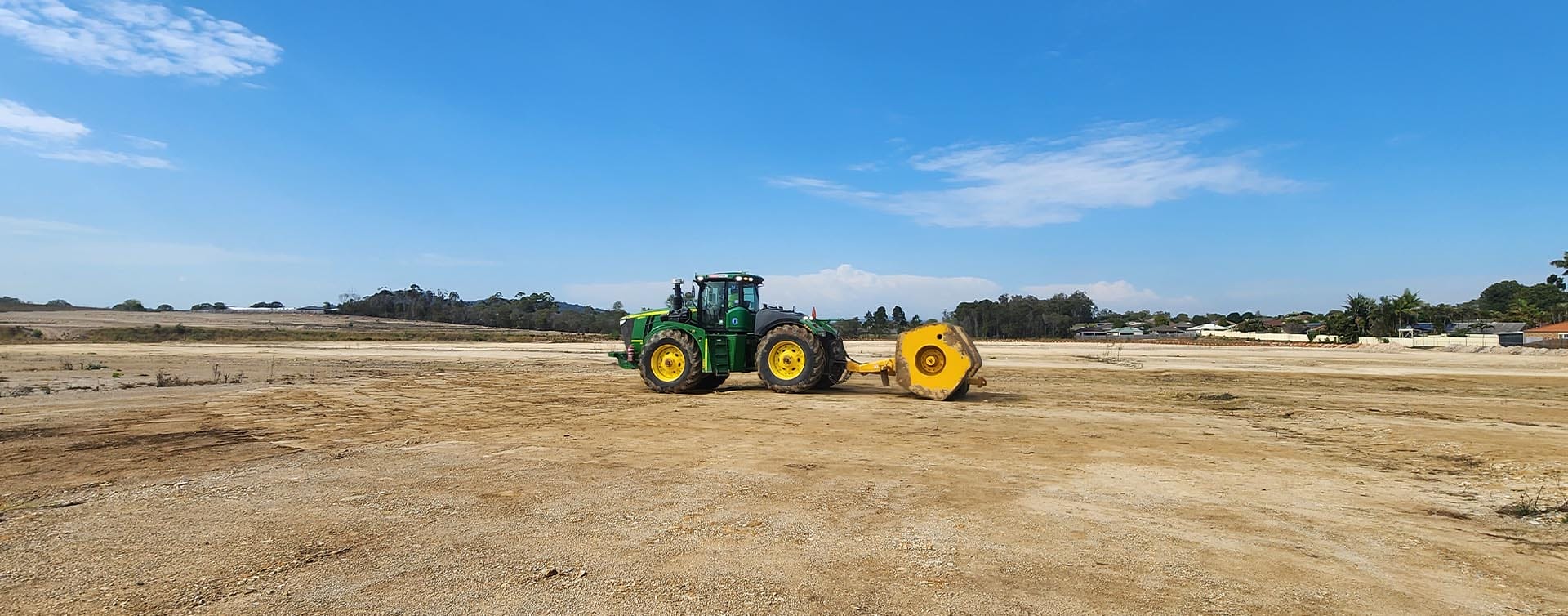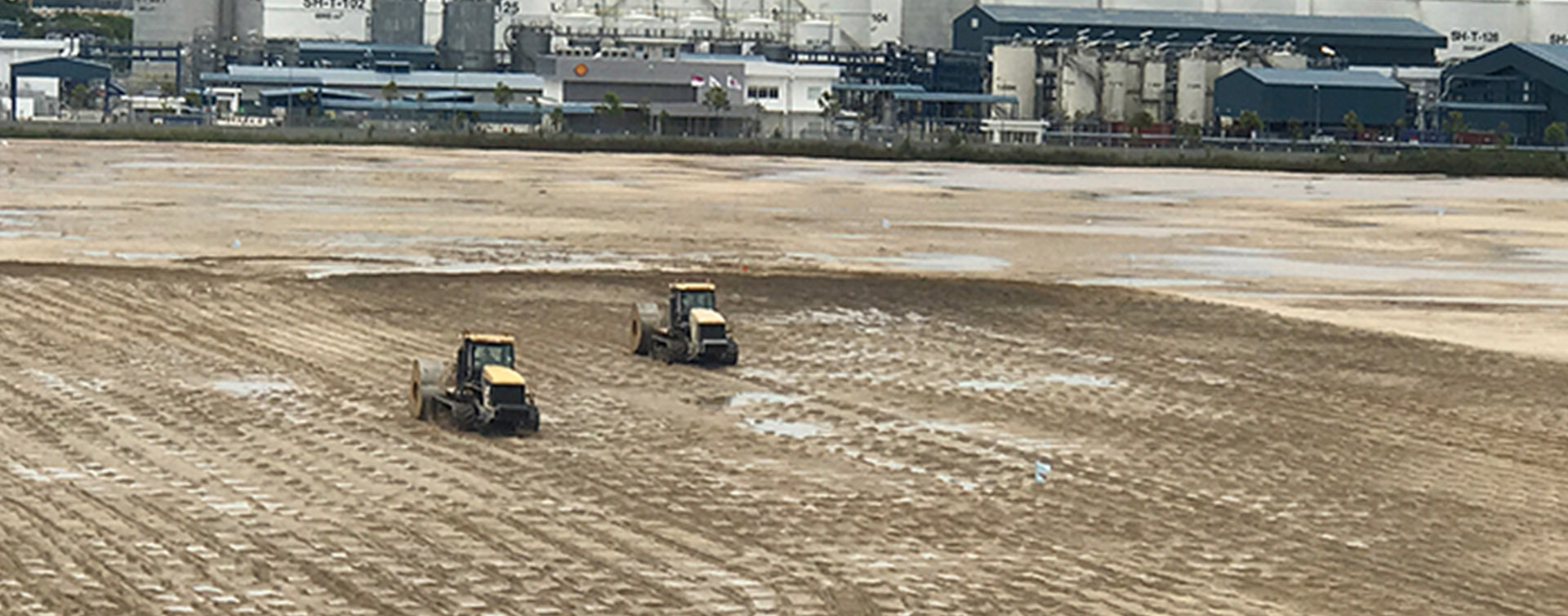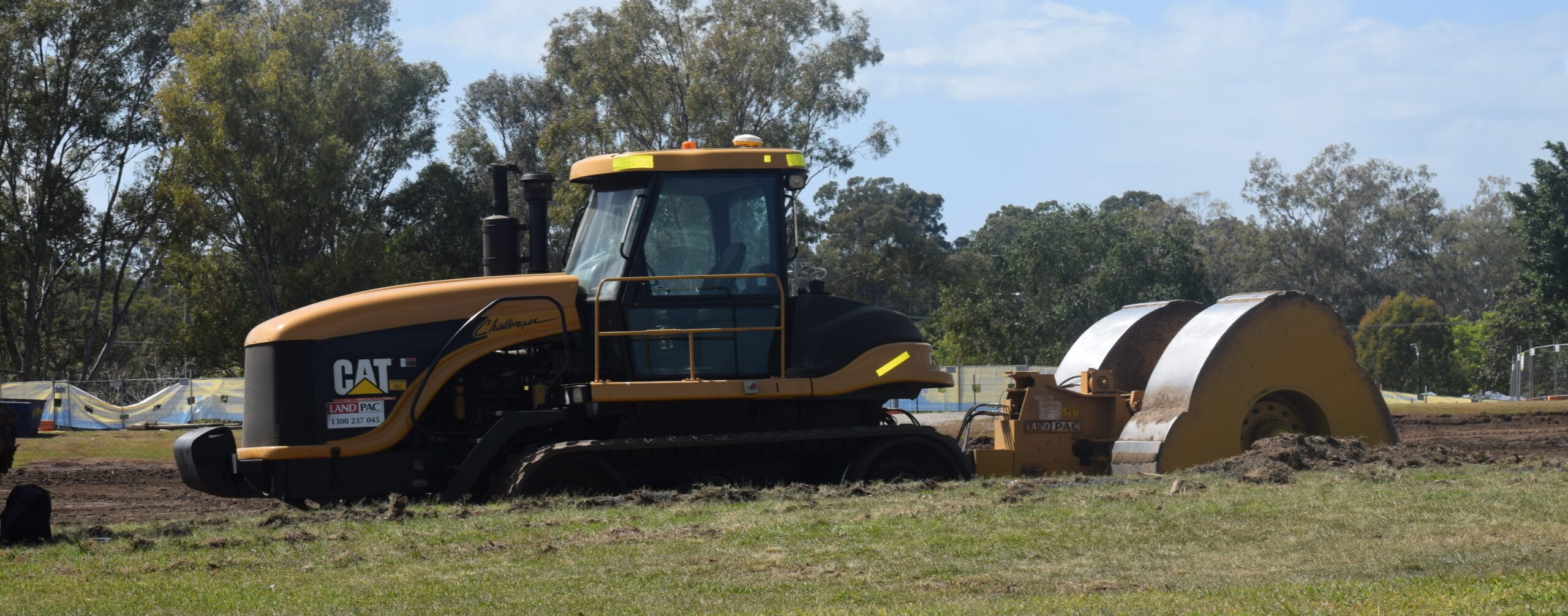HEIC for the Treatment of Dry Materials
High Energy Impact Compaction for the Treatment of Dry Materials
High Energy Impact Compaction (HEIC) is a powerful technique that can be employed for the treatment of dry materials, offering effective densification and stabilisation. This method is particularly useful when dealing with loose or uncompacted dry materials that require improved compaction, strength, and stability. HEIC provides numerous benefits for the treatment of dry materials, enhancing their performance in various applications.

Benefits of High Energy Impact Compaction for Dry Materials
HEIC, or High Energy Impact Compaction, is particularly effective in delivering high compaction energy to dry materials, facilitating their densification and compaction. The impact forces generated during the process are instrumental in rearranging particles, thus reducing voids and significantly increasing the material’s density. This densification process is key in improving the structural integrity and stability of the compacted material.
The load-bearing capacity of dry materials is notably enhanced through the use of HEIC. By compacting these materials, their structure becomes denser and more compact, allowing them to withstand greater loads and resist deformation. This increase in load-bearing capacity is crucial for ensuring the long-term stability and reliability of structures built on or with these materials.
Additionally, HEIC plays a vital role in improving the strength and durability of dry materials. The process of increasing density and reducing void spaces through compaction directly contributes to the material’s ability to withstand external forces. This reduces the risk of settlement and structural failure, making HEIC an invaluable tool in construction and land management.
Another significant advantage of HEIC is its ability to reduce the permeability of dry materials. By compacting the material and closing voids, HEIC enhances particle interlock, thereby limiting the flow of water or other fluids. This reduced permeability is crucial in minimising risks such as erosion, moisture-induced damage, or the migration of contaminants through the material.
Finally, HEIC ensures uniformity and consistency in the compaction of dry materials. This uniform compaction is essential for consistent performance and properties across the entire material, eliminating variations that can lead to issues like differential settlement or other undesirable behaviors. The consistency achieved through HEIC is vital for the integrity and predictability of construction and land development projects.
Applications of High Energy Impact Compaction for Dry Materials
Granular Soils and Sands: HEIC is highly effective in compacting granular soils and sands, improving their stability and load-bearing capacity. It is beneficial for applications such as road and pavement construction, foundation preparation, and embankment stabilisation.
Aggregate Base Courses: Dry materials used as aggregate base courses in road construction or other infrastructure projects can be compacted using HEIC. This ensures a solid foundation and minimises the risk of settlement or failure under traffic loads.
Industrial Bulk Materials: HEIC can be utilised for the compaction and stabilisation of dry industrial bulk materials, such as coal ash, cement kiln dust, or quarry fines. The treatment enhances their handling characteristics, reduces dust generation, and improves their suitability for various industrial processes.
Dry Waste Management: HEIC can assist in the compaction and stabilisation of dry waste materials, such as construction and demolition debris, fly ash, or contaminated soils. This aids in reducing waste volume, improving landfill capacity, and minimising environmental risks associated with waste disposal.

Considerations for HEIC in Dry Material Treatment
Material Characteristics: The effectiveness of HEIC for dry material treatment depends on the characteristics of the specific material. Particle size distribution, angularity, moisture content, and other material properties influence the compaction outcomes and require careful evaluation.
Equipment and Energy Selection: The selection of appropriate compaction equipment and energy levels is critical for achieving optimal results in dry material treatment. The equipment should be capable of delivering high-energy impacts tailored to the specific material and project requirements.
Project Planning and Execution: Proper planning and execution are essential for successful dry material treatment using HEIC. Site-specific conditions, project specifications, and regulatory requirements should be considered to ensure the desired compaction outcomes and environmental compliance.
Landpac's Application of High Energy Impact Compaction for Stability and Durability
By utilising High Energy Impact Compaction (HEIC), Landpac provides effective solutions for the treatment of dry materials that require improved compaction, strength, and stability. Their expertise in HEIC techniques ensures the successful densification and stabilisation of dry materials, leading to enhanced load-bearing capacity, increased durability, and reduced permeability. Through their innovative approach, Landpac contributes to the optimisation of dry material applications in various industries, promoting efficient and sustainable practices. Get in touch to find out more.
Latest news

Understanding High Energy Impact Compaction (HEIC)
High Energy Impact Compaction (HEIC) revolutionises ground improvement with its ability to achieve superior soil density and stability. Unlike traditional methods, HEIC uses advanced rollers and compaction technology to penetrate deeper soil layers.

Laying the Foundation: Why ground improvement engineering matters
Ground improvement enhances soil stability and strength, reducing risks and costs in construction. Techniques like HEIC ensure efficient, sustainable solutions for safer infrastructure.

HEIC’s Role in Sustainable Construction Practices
HEIC boosts sustainable construction by stabilising soil, cutting environmental impact, and reusing existing land. It’s a fast, efficient way to build stronger, longer-lasting infrastructure while protecting the environment.
